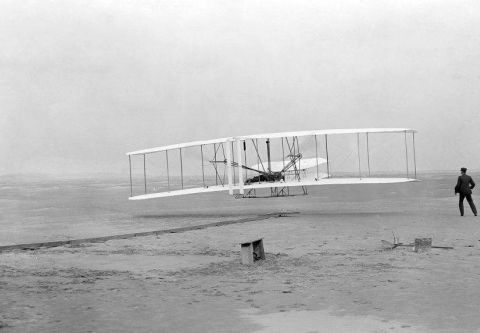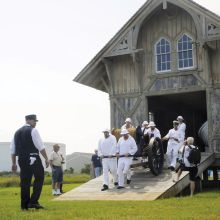
It’s a milestone year in Outer Banks history, the 150th anniversary of the arrival of the U.S. Life-Saving Service along the North Carolina coast. Chicamacomico Life-Saving Station in Rodanthe, the first life-saving station commissioned in North Carolina on December 4, 1874, and now a restored historic site and museum, is spearheading the efforts to commemorate the opening of the original seven 1874 stations on the Outer Banks.
The U.S. Life-Saving Service was created to save the lives of shipwreck victims, and one area where it was greatly needed was off the coast of North Carolina. The waters off North Carolina’s barrier islands, now known as the Outer Banks, are notoriously dangerous, a region of shoals, sandbars, storms and colliding currents. With thousands of shipwrecks lying off these shores, the coast of North Carolina long ago earned the moniker Graveyard of the Atlantic.
Shipwrecks have been occurring off the Outer Banks since the first European explorers started arriving on these shores in the late 16th century, but back then there were few people on shore to assist shipwrecked victims. As colonization took a foothold, the few barrier residents helped shipwrecked victims the best they could, but the population on the East Coast was small and the chances of getting help from shore were slim. By the 1800s, when shipping and commerce along the East Coast surged, shipwrecks all along the East Coast, and especially around these barrier islands, increased exponentially. The American government started a life-saving system in 1848, but it was underfunded and neglected through the Civil War. An increasing number of shipwrecks and deaths were being reported in the newspapers, and something had to be done.
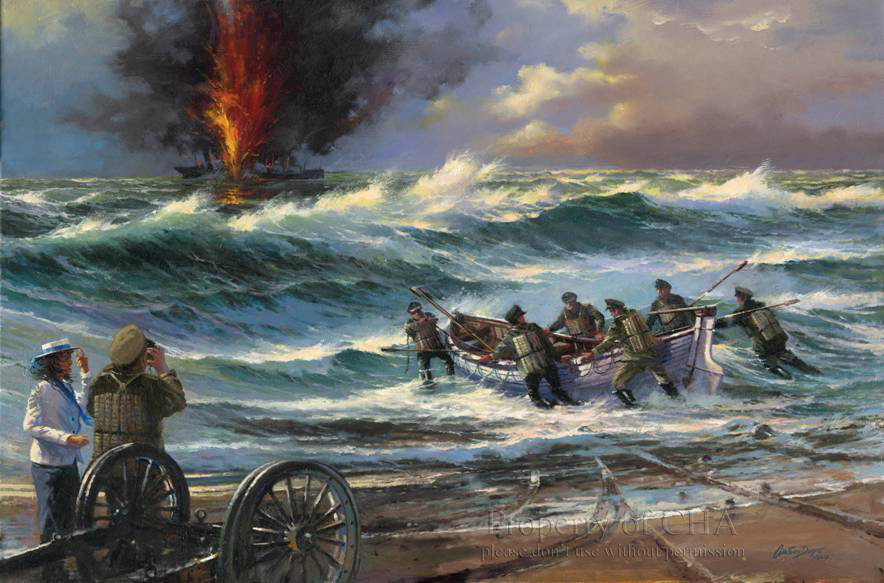 In 1871 the federal government formally established the U.S. Life-Saving Service (USLSS), an official government entity to assist shipwreck victims. Three years later, in 1874, the USLSS reached the Outer Banks, and seven stations were established here: Jones’s Hill (later Currituck Beach), Caffeys Inlet (near present-day Duck), Kitty Hawk Beach, Nags Head, Bodie Island (on the south side of Oregon Inlet and later called Oregon Inlet), Chicamacomico (present-day Rodanthe) and Little Kinnakeet (present-day Avon).
In 1871 the federal government formally established the U.S. Life-Saving Service (USLSS), an official government entity to assist shipwreck victims. Three years later, in 1874, the USLSS reached the Outer Banks, and seven stations were established here: Jones’s Hill (later Currituck Beach), Caffeys Inlet (near present-day Duck), Kitty Hawk Beach, Nags Head, Bodie Island (on the south side of Oregon Inlet and later called Oregon Inlet), Chicamacomico (present-day Rodanthe) and Little Kinnakeet (present-day Avon).
According to David Stick in his book The Outer Banks of North Carolina, each station had a keeper, who received an annual salary of $200, and six surfmen, who lived and worked at the station during the active winter season, for $40 per month. For each shipwreck rescue they attended, the men were paid an additional $3 each. The surfmen were locals who knew the area well, and they heroically saved lives using the simplest of tools: cork vests, wooden boats, ropes, carts and rudimentary beach apparatus known as the breeches buoy. The working conditions were extreme: patrolling the beach for hours (in the early days on foot without the aid of horses) and going out into rough, stormy, freezing seas to rescue shipwreck victims.
In fact, a saying in the USLSS was: “You have to go out, but you don’t have to come back.” This was proven in the wreck of the Italian bark Nuova Ottavia at Currituck Beach in 1876. The vessel struck a sand bar in rough seas at night, and the surfmen from the Jones Hill Station launched their surfboat to save the crew on the vessel. The wooden surfboat capsized, and the entire Jones Hill crew perished, along with five of the seven sailors aboard the ship.
Problems with the USLSS system on the northern North Carolina coast were exposed in the winter of 1877-78. First, the USS Huron ran aground off Nags Head on November 24, 1877, when the winter life-saving season had not yet begun at the Nags Head Life-Saving Station. Even though the ship was not too far from shore, 98 lives were lost.
Two months later, the wooden-hull steamer Metropolis struck a sandbar 4.5 miles south of the Jones Hill station on January 31, 1878. More than five hours went by before the life-savers discovered the wreck and were able to lug their equipment over the sand to wreck. Eighty-five lives were lost, a fact that was blamed on the separation of the stations.
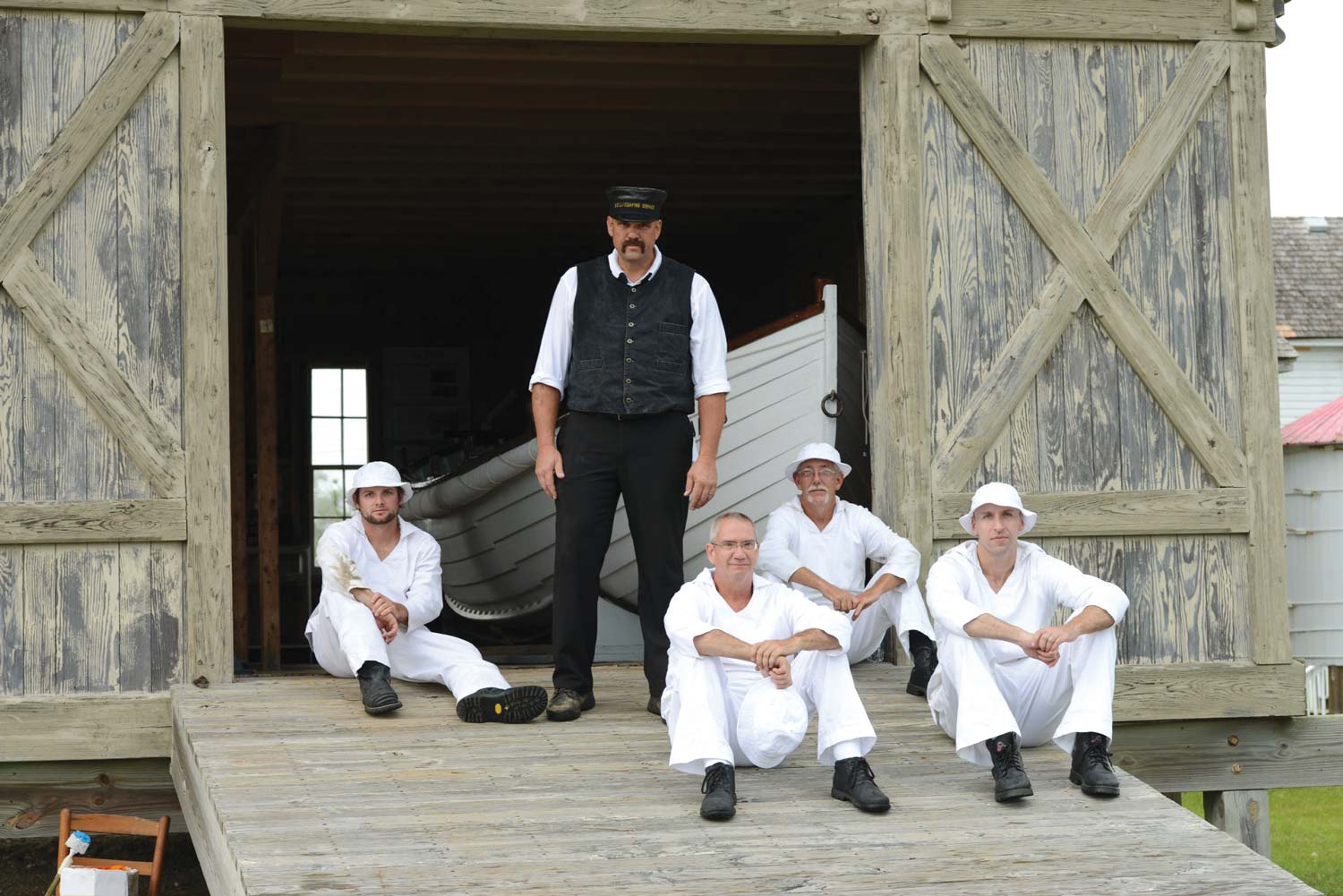
After those two wrecks, Congress recognized the need for additional stations and a year-round life-saving season. By the following winter, 1878-79, the Outer Banks had 11 new stations: Deal’s Island (later Wash Woods), Old Currituck Inlet (later Penneys Hill), Poyners Hill, Paul Gamiels Hill, Kill Devil Hills, Tommy’s Hummock, Pea Island, Cedar Hummock (later Gull Shoal), Big Kinnakeet, Creeds Hill and Hatteras (later Durants). By 1883 other voids had been filled with stations at New Inlet, Cape Hatteras, Hatteras Inlet, Ocracoke, Portsmouth, Core Banks, Cape Lookout, Fort Macon, Bogue Inlet and Oak Island, bringing the total of North Carolina stations to 29, all just about 6 miles apart.
The life-saving season became longer and longer until the stations were staffed all year round, and a seventh surfman was added to each station. Surfmen constantly patrolled the coastline, day and night, on the lookout for vessels in distress. The life-savers were respected members of the community, known for their bravery and their knowledge of weather and storms and their ability to give medical attention. In some areas, small communities sprang up around the stations so the keeper’s and surfmen’s families could live close by.
The tales of heroism from the USLSS stations on the Outer Banks alone are incredible. There’s the story of Rasmus Midgett who single-handedly rescued 10 victims from the Priscilla in August of 1899 (you can hear this story at the Graveyard of the Atlantic Museum in Hatteras). There’s the story of the Pea Island Life-Saving Station crew, the only all-Black crew in the nation, and their heroic rescue of the E.S. Newman in October of 1896 (told in the book Fire on the Beach by David Wright and David Zoby) and hundreds more.
The Chicamacomico station is best known for the 1918 rescue of Mirlo, recognized as one of the top rescues in maritime history. In that event, the crew of the Chicamacomico saved 42 sailors from the British tanker Mirlo, which was on fire in the ocean after it was struck by a torpedo from U-boat 117. At the Chicamacomico site today you can hear the whole story and see the surfboat used in that rescue as well as photographs.
Across the country, on both coasts and around the Great Lakes, the U.S. Life-Saving Service was active for 44 years. In that time the service attended 28,121 wrecks and 178,741 people and lost only 1,455 lives – in essence saving more than 177,000 lives across the country. In 1915 the federal government merged the U.S. Life-Saving Service with the U.S. Cutter Service to form the U.S. Coast Guard

Life-Saving Stations of the Outer Banks
Original 1874 Stations
Jones’s Hill
Caffeys Inlet
Kitty Hawk
Nags Head
Bodie Island (later called Oregon Inlet)
Chicamacomico
Little Kinnakeet
Of the original seven stations, three are still standing. Kitty Hawk has been restored and is part of Black Pelican Restaurant in Kitty Hawk. Chicamacomico is a museum and historic site in Rodanthe and Little Kinnakeet is in Cape Hatteras National Seashore (open to the public for tours for the first time this year for the 150th anniversary). The 1897 version of the Caffeys Inlet station is the Lifesaving Station Restaurant at Sanderling Resort. The 1898 version of the Oregon Inlet station can be seen on the south side of the Basnight Bridge on Hatteras Island; a group called the Outer Banks Coast Guard History Preservation Group is working to save it as a visitor center and history museum.
1878 Stations
Deal’s Island / Wash Woods
Old Currituck Inlet / Penneys Hill
Poyners Hill
Paul Gamiel Hill
Kill Devil Hills
Tommy’s Hummock / Bodie Island
Pea Island
Cedar Hummock / Gull Shoal
Big Kinnakeet
Creeds Hill
Hatteras / Durants
Of the original 1878 stations, Kill Devil Hills has been moved to Corolla and is the Twiddy & Co. real estate office. The Wash Woods station is also used as a Twiddy real estate office in the 4x4 area north of Corolla. The 1879 and 1925 Bodie Island station can be seen at the entrance to the Bodie Island Lighthouse.
Later Stations
New Inlet (1882)
Cape Hatteras (1882)
Hatteras Inlet (1883)
Ocracoke (1904)
Portsmouth (1894)
The Portsmouth village station, restored and maintained by Cape Lookout National Seashore, is open to self-guided tours on remote Portsmouth Island (accessible from Ocracoke).
Learn More About the Life-Saving Stations
Chicamacomico Life-Saving Station Historic Site
A historic site carefully preserved by the Chicamacomico Historical Association, this site features two original life-saving station buildings and their accompanying structures such as cookhouses, a stable, water towers, a cistern and period rescue equipment. It’s one of the few places in the country where you can learn about the history of the heroic life-savers of the Outer Banks and the nation. Historic Shipwreck Rescue Re-enactments are held every Thursday at 2 p.m. through August 29.
252) 987-1552 | 23645 U.S. Highway 12, Rodanthe | chicamacomico.org
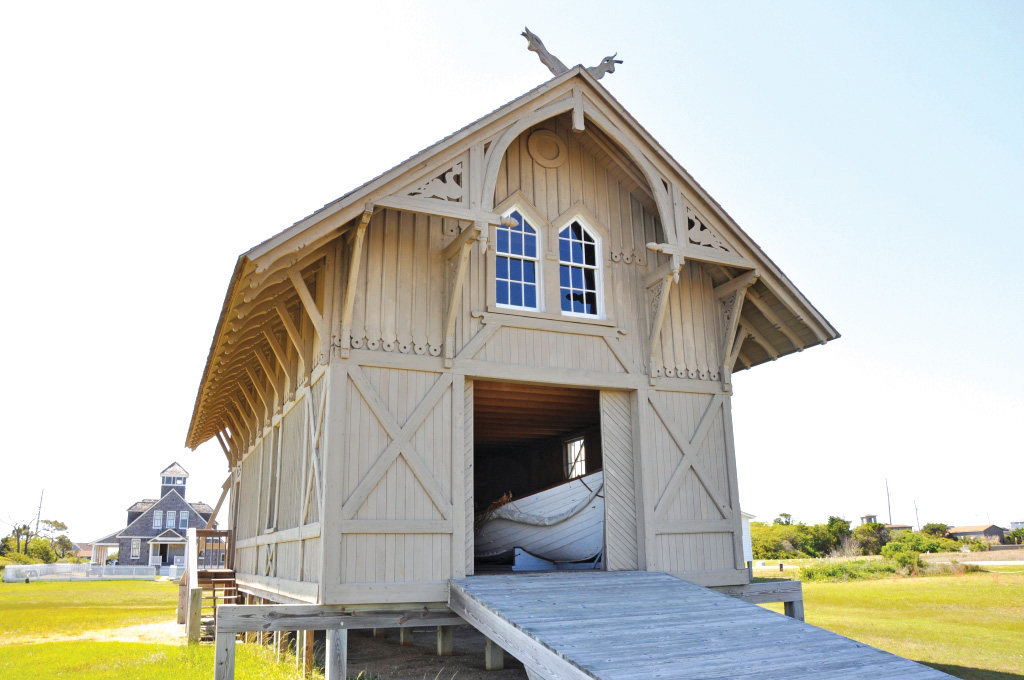
150th Anniversary of the USLSS Events on the Outer Banks
Porch Speakers Series
Chicamacomico Life-Saving Station Historic Site is holding porch talks with speakers sharing stories about life-saving history. Go to chicamacomico.org > Plan Your Visit > Events to see upcoming programs.
Little Kinnakeet Station Tours
Every Friday at 3 p.m. from June 28 through August 30, meet an educational ranger for a guided, 45-minute tour of the historic Little Kinnakeet Life-Saving Station. This is a rare treat, as the station has never been open to the public. Take a look inside the 1874 Boat House and 1892 Kitchen. The station is located 3.5 miles north of Avon on the sound side of Hatteras Island. Note: There are no restrooms, and sturdy footwear is recommended
150th Anniversary Celebration
Over Columbus Day weekend, October 11 and 12, 2024, a grand celebration will take place at Chicamacomico Life-Saving Station Historic Site in Rodanthe. There will be speakers, ceremonies, a Beach Apparatus Drill, a U.S. Coast Guard search and rescue demo with a helicopter in the ocean, static displays of Coast Guard equipment and more. Stay tuned to chicamacomico.org for updates and details.
Life-Saving Station Historic Site
23645 N.C. Highway 12
(252) 987-1552
chicamacomico.org


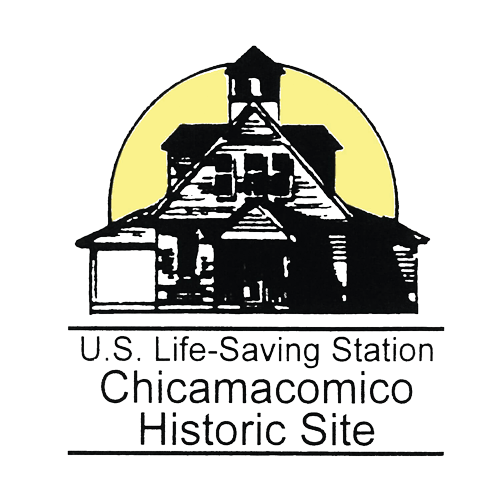
 Molly Harrison is managing editor at OneBoat, publisher of OuterBanksThisWeek.com. She moved to Nags Head in 1994 and since then has made her living writing articles and creating publications about the people, places and culture of the Outer Banks.
Molly Harrison is managing editor at OneBoat, publisher of OuterBanksThisWeek.com. She moved to Nags Head in 1994 and since then has made her living writing articles and creating publications about the people, places and culture of the Outer Banks.


